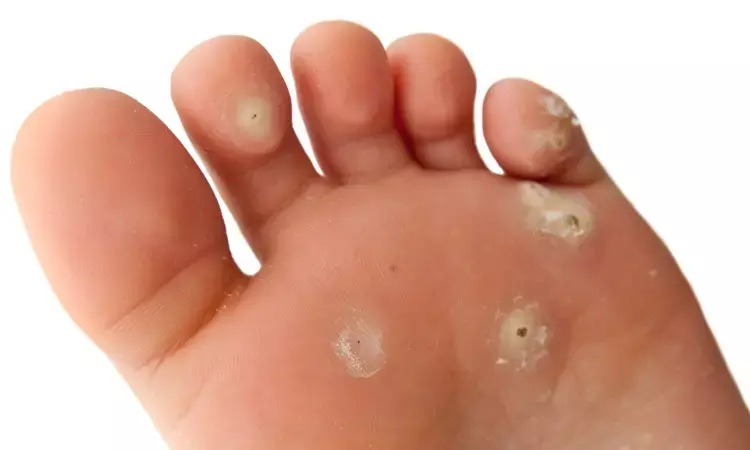- Home
- Medical news & Guidelines
- Anesthesiology
- Cardiology and CTVS
- Critical Care
- Dentistry
- Dermatology
- Diabetes and Endocrinology
- ENT
- Gastroenterology
- Medicine
- Nephrology
- Neurology
- Obstretics-Gynaecology
- Oncology
- Ophthalmology
- Orthopaedics
- Pediatrics-Neonatology
- Psychiatry
- Pulmonology
- Radiology
- Surgery
- Urology
- Laboratory Medicine
- Diet
- Nursing
- Paramedical
- Physiotherapy
- Health news
- Fact Check
- Bone Health Fact Check
- Brain Health Fact Check
- Cancer Related Fact Check
- Child Care Fact Check
- Dental and oral health fact check
- Diabetes and metabolic health fact check
- Diet and Nutrition Fact Check
- Eye and ENT Care Fact Check
- Fitness fact check
- Gut health fact check
- Heart health fact check
- Kidney health fact check
- Medical education fact check
- Men's health fact check
- Respiratory fact check
- Skin and hair care fact check
- Vaccine and Immunization fact check
- Women's health fact check
- AYUSH
- State News
- Andaman and Nicobar Islands
- Andhra Pradesh
- Arunachal Pradesh
- Assam
- Bihar
- Chandigarh
- Chattisgarh
- Dadra and Nagar Haveli
- Daman and Diu
- Delhi
- Goa
- Gujarat
- Haryana
- Himachal Pradesh
- Jammu & Kashmir
- Jharkhand
- Karnataka
- Kerala
- Ladakh
- Lakshadweep
- Madhya Pradesh
- Maharashtra
- Manipur
- Meghalaya
- Mizoram
- Nagaland
- Odisha
- Puducherry
- Punjab
- Rajasthan
- Sikkim
- Tamil Nadu
- Telangana
- Tripura
- Uttar Pradesh
- Uttrakhand
- West Bengal
- Medical Education
- Industry
Breakthrough Study: Comparing Plantar Wart Treatments and Ensuring Clear Results with Dermoscopy

Egypt: A recent prospective, randomized study has shed new light on effective treatments for recalcitrant plantar warts, comparing intralesional combined digoxin and furosemide against intralesional 5-fluorouracil. Plantar warts, caused by the human papillomavirus (HPV), can be particularly stubborn and resistant to traditional treatments, making them a significant challenge for patients and dermatologists.
The study, published in the Archives of Dermatological Research, revealed near equivalent safety and efficacy of intralesional injection of 5-fluorouarcil and combined digoxin and furosemide for plantar wart treatment. Dermoscopy aids in accurately assessing the complete clearance of warts.
"Each treatment achieved an 80% clinical response rate, with approximately 40% and 33.3% achieving complete wart clearance, respectively," the researchers reported.
Many therapeutic modalities exist for plantar warts, however, their treatment remains challenging. Intralesional injection of 5-fluorouarcil and combined digoxin and furosemide were safe and effective, however, no comparison study between them was done. Considering this, Nourhan Anis, Zagazig University, Zagazig, Egypt, and colleagues aimed to evaluate the efficacy of both therapies in treating plantar warts.
The study included 90 adult patients with multiple recalcitrant plantar warts. They were randomly allocated to one of three groups; combined digoxin and furosemide, 5-fluorouarcil, or normal saline group. Fortnightly injections were done into all studied warts till complete clearance or up to 5 sessions. Warts were evaluated dermoscopically and clinically.
The following were the key findings of the study:
- Clinical response was reported in 80% of patients of the combined digoxin and furosemide group with 40% complete response and in 80% of patients of the 5-fluorouarcil group with 33.3% complete response.
- For safety and efficacy, there was no statistically significant difference between the two groups.
In conclusion, both intralesional injections of 5-fluorouracil and combined digoxin and furosemide demonstrate nearly equivalent efficacy and safety in treating plantar warts. The researchers recommend incorporating dermoscopy into wart treatment to accurately determine treatment endpoints, thereby reducing the likelihood of recurrence.
Further research should focus on larger patient cohorts, expanding the evaluation to include more treatment sessions, and comparing the intralesional administration of combined digoxin and furosemide with topical application. Additionally, larger studies with extended follow-up periods are needed to assess potential recurrences and confirm long-term efficacy.
The findings of this study are expected to influence clinical practices, offering dermatologists and patients alike new hope in effectively combating persistent plantar warts. As research continues to evolve, the focus remains on refining treatment approaches to enhance outcomes and quality of life for individuals affected by these troublesome skin lesions.
Reference:
khattab, F., Essam, R., Elhadidy, R.F. et al. Intralesional combined digoxin and furosemide versus intralesional 5-flurouracil for the treatment of recalcitrant plantar warts: a prospective, randomized study. Arch Dermatol Res 316, 411 (2024). https://doi.org/10.1007/s00403-024-03014-z
Dr Kamal Kant Kohli-MBBS, DTCD- a chest specialist with more than 30 years of practice and a flair for writing clinical articles, Dr Kamal Kant Kohli joined Medical Dialogues as a Chief Editor of Medical News. Besides writing articles, as an editor, he proofreads and verifies all the medical content published on Medical Dialogues including those coming from journals, studies,medical conferences,guidelines etc. Email: drkohli@medicaldialogues.in. Contact no. 011-43720751


